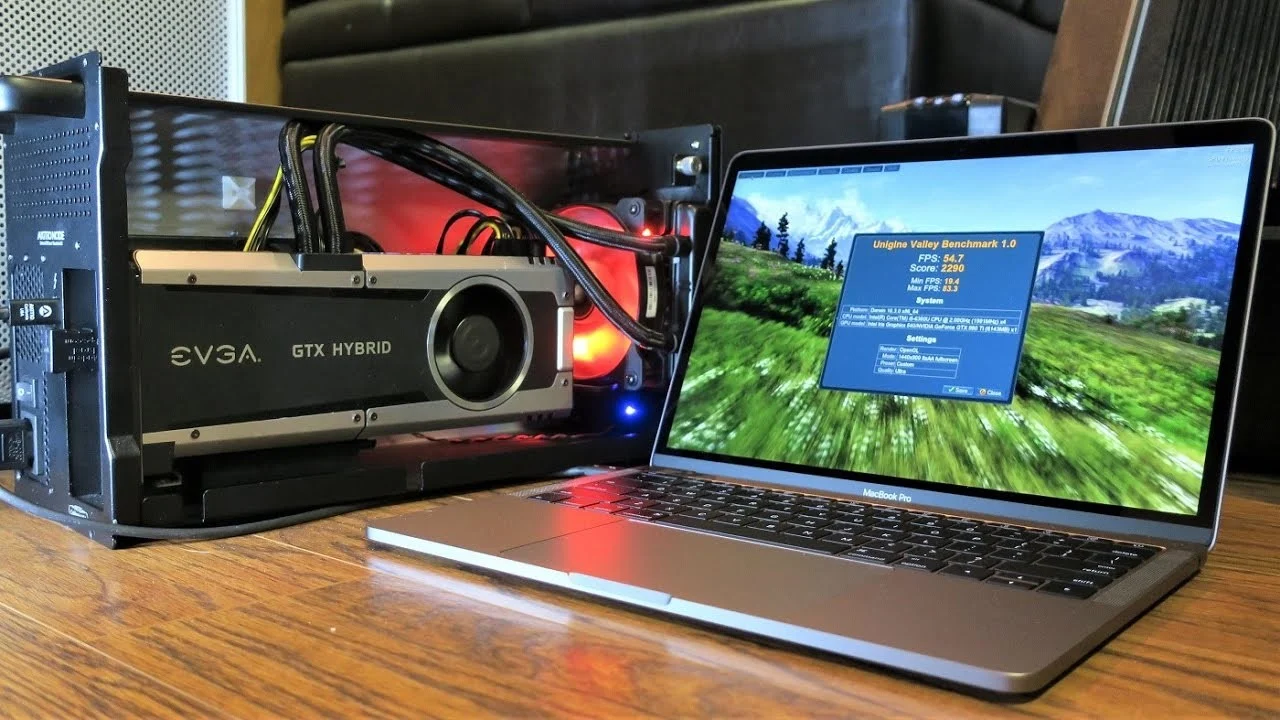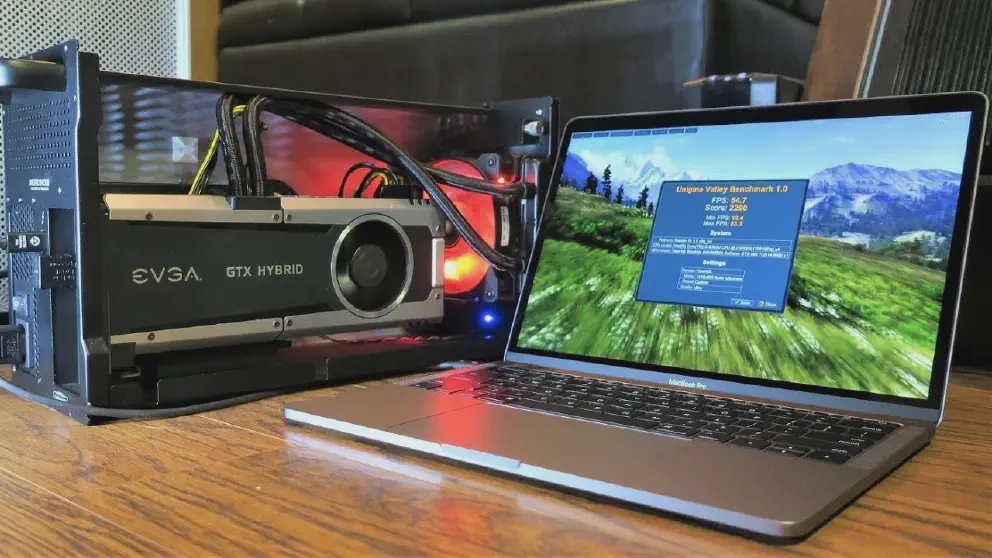Update: Since the introduction of Apple Silicon beginning with M1, eGPUs are no longer being supported on Macs. However, they eGPU are supported on Intel Macs. As of press time, Apple shows no indication of supporting eGPU on Apple Silicon.
Imagine that you have your laptop. It can be bought everywhere. Imagining having a special box that contains the latest graphic card. Connect a cable to a card and you have the power of a full blown graphic card at your disposal. Unplug, and you have the mobility of a laptop to take your work everywhere. That is the idea of the eGPU.
What is eGPU?
What is an eGPU? eGPU stands for External Graphic Processing Unit. The keywords being external and GPU. The GPU is the fancier name of your graphic card that draws polygons or points on your screen. These are specialized chips to handle polygon drawing calculations. Previously, the cards reside on your board very close to the CPU as the CPU will offload the processing to the GPU. The dataset required for processing tends to be huge hence the requirement for the GPU to be close to the CPU. However I/O though the CPU has improved and when Thunderbolt 3 protocol arrives on scene, it is possible to have 20GB/s bandwidth. At that level of bandwidth, it is possible to transfer data externally, to be processed quickly and returned to the display without any laggy effects.
eGPU support is introduced in MacOS High Sierra. The early implementation is a bit shaky at best but the graphic improvements are there. The main issue was detecting eGPU, switching between eGPU and where the output will go, either the main screen or to the external GPU only.
Apple recommended BlackMagic eGPU by BlackMagic Design. It features Radeon Pro 560 graphic cards internally and in typical Apple fashion, the card itself cannot be upgraded. Other companies like Razer launched eCPU chassis that allows you to put any card in it.
The Setup

The setup for eGPU is very easy. All you need to do is to get the eGPU chassis and get the video card that is supported in macOS. Install the GPU into the eGPU chassis and connect the eGPU to the Mac using a thunderbolt cable. Ensure that the eGPU chassis is powered.
Now, macOS will detect the presence of eGPU. You can now tell macOS that you want to use the eGPU or internal GPU.
The Results
Reviewers praise that the eGPU solution has brought massive improvements across the board on Intel Macs. For Macs with integrated graphics, like the MacBook Air or the 13" MacBook Pro, you have the capabilities of the Macs that have a discrete graphics card. Most Mac machines except for the Mac Pro do not have a slot to put full size graphic cards to the Mac. The eGPU solution provides such an avenue and greatly improves graphic performance on the Macs itself.



Here are some reviewers that conducted testing with eGPUs:-
Issues & Limitations
eGPU is good idea on paper, but the implementation is now without faults. Firstly, Apple makes their own graphic drivers for hardware. This enables each hardware connected to the macOS system to be consistent and have features that Apple wants or care about. Because of the long feud with Nvidia, Apple does not have Nvidia drivers on the latest macOS. This means more than half of graphics cards on the market is unavailable to the potential user.
eGPU on M1 Macs
Another issue, at present, eGPU support is only for Intel Macs. Since the release of the M-series Mac, beginning with M1 on Macbook Air, Mac Mini and MacBook Pro, eGPU support has dropped. There is no reason given by Apple for such a move. Speculation is abound with why Apple won’t support eGPU. One of the reasons is Apple would like everything, including graphics, to be integrated in the main chip. At present, users report that eGPU presence is detected on M1 Macs, but you will not be able to use them. Since this is a software issue, Apple’s stance might change in the future.
Conclusion
eGPU is good technology on paper. The idea that you can harness the power of a full size eGPU that can raise a laptop GPU performance by 100 or even 200 percent is sexy. However, this implementation remains a niche market. The enemy of perfect is good enough and the problem with the current market is that the internal GPU remains good enough for most people so the eGPU idea does not catch on. That being said, I hope that Apple does not abandon support for eGPU like how Apple abandoned target display mode on the iMacs. Since this is just a software solution, we hope that a giant like Apple would not have any problems implementing eGPU for future Macs as they transition to Apple Silicon.
Plug
Support this free website by visiting my Amazon affiliate links. Any purchase you make will give me a cut without any extra cost to you
- Mac Mini M1 - Amazon USA / Amazon UK
- iMac 24" M1 - Amazon USA / Amazon UK
- Mac Studio - Amazon USA
- MacBook Air M1 - Amazon USA / Amazon UK
- MacBook Pro 13" M1 - Amazon USA / Amazon UK
- MacBook Pro 14" M1 Pro / M1 Max - Amazon USA / Amazon UK
- MacBook Pro 16" M1 Pro / M1 Max - Amazon USA / Amazon UK
- Accessories:-
- Wireless earphones / headphones:-
- AirPods - Amazon USA / Amazon UK
- AirPods Pro - Amazon USA / Amazon UK
- AirPods Max - Amazon USA / Amazon UK
- Buyer's Guide:-
